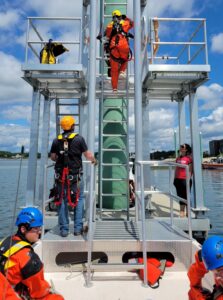 HYANNIS – If you have suffered an embarrassing moment of urinary leakage or had to make frequent mad dashes to the bathroom, you’re not alone. The Urology Foundation estimates that 33 million people in the United States have a condition known as overactive bladder (OAB) and approximately 40 percent of them are women.
HYANNIS – If you have suffered an embarrassing moment of urinary leakage or had to make frequent mad dashes to the bathroom, you’re not alone. The Urology Foundation estimates that 33 million people in the United States have a condition known as overactive bladder (OAB) and approximately 40 percent of them are women.
“OAB is caused by a neurological dysfunction of the pelvic nerves,” said Lucia Cagnes, MD, a gynecologist at All Cape Gynecology in Hyannis. ”It causes the detrusor muscle of the bladder, which is responsible for the normal process of urinating, to contract frequently or all the time. You can have the sensation of urgency (overwhelming need to urinate) and/or urinary frequency (the need to urinate many times day and/or night).”
Some people with the condition experience no leakage or a small amount, while others have leakage “from a few drops to a massive amount,” she said.
While there are treatments that include medications, pelvic floor exercises and lifestyle changes, many women continue to suffer the day-to-day challenges of dealing with the symptoms.
Now there is InterStim, a new advancement in the treatment of OAB. It proved to be the answer for Linda, 75, (who requested that her last name not be used), a patient in Dr. Cagnes practice who has suffered from incontinency and urgency for 20 years.
“I never passed a bathroom, I didn’t use,” she said. “I had to wear pads all the time.”
She tried different prescription medications that didn’t completely alleviate her symptoms or leakage. Her life continued to be controlled by mapping out the locations of bathrooms, just in case she needed one, she said.
A ‘Life Saver”
Linda is one of the three patients who had the InterStim procedure in May. In just two weeks, all of her OAB symptoms were alleviated.
“InterStim is revolutionary and a life-saver,” said Dr. Cagnes. “It allows women to live a normal life.”
InterStim “is like a pacemaker for the bladder,” said Dr. Cagnes. “It is one way to reset the pelvic nerve function back to normal by stimulating the sacral nerve. It empowers women because they can control the stimulation of the nerve, themselves, by using a small remote controller.”
The InterStim procedure is done in two steps. Both steps are performed in the operating room one week apart. A lead is threaded through the skin at the level of the sacrum in order to stimulate the sacral nerve. The other end of the lead is attached to an external device that the patient uses to control the intensity of the stimulation to the bladder.
If symptoms are either noticeably less or gone at that point, then the patient goes on to step two for permanent implantation of a battery pack. The pack, which is about the size of a small dental floss container, is implanted in a pocket of fat in the upper area of the buttock. The pack lasts about five years, according to Dr. Cagnes.
“Patients (in the test phase) know within 48 to72 hours if it is working for them,” said Meg McArdle, ANP-BC, CN-BN, a nurse practitioner who works with Dr. Cagnes.
“InterStim has made a huge difference and an unbelievable change in my life,” said Linda. “I don’t have to worry and I haven’t had any ‘accidents’ since my surgery and it surprises me when I can make it to the bathroom in time. I haven’t had that since I was 55.”
She said she doesn’t feel any of the stimulation from the InterStim.
“It’s just there doing its job.”
The InterStim procedure is available for women of any age and it is covered by insurance, according to Dr. Cagnes.






















